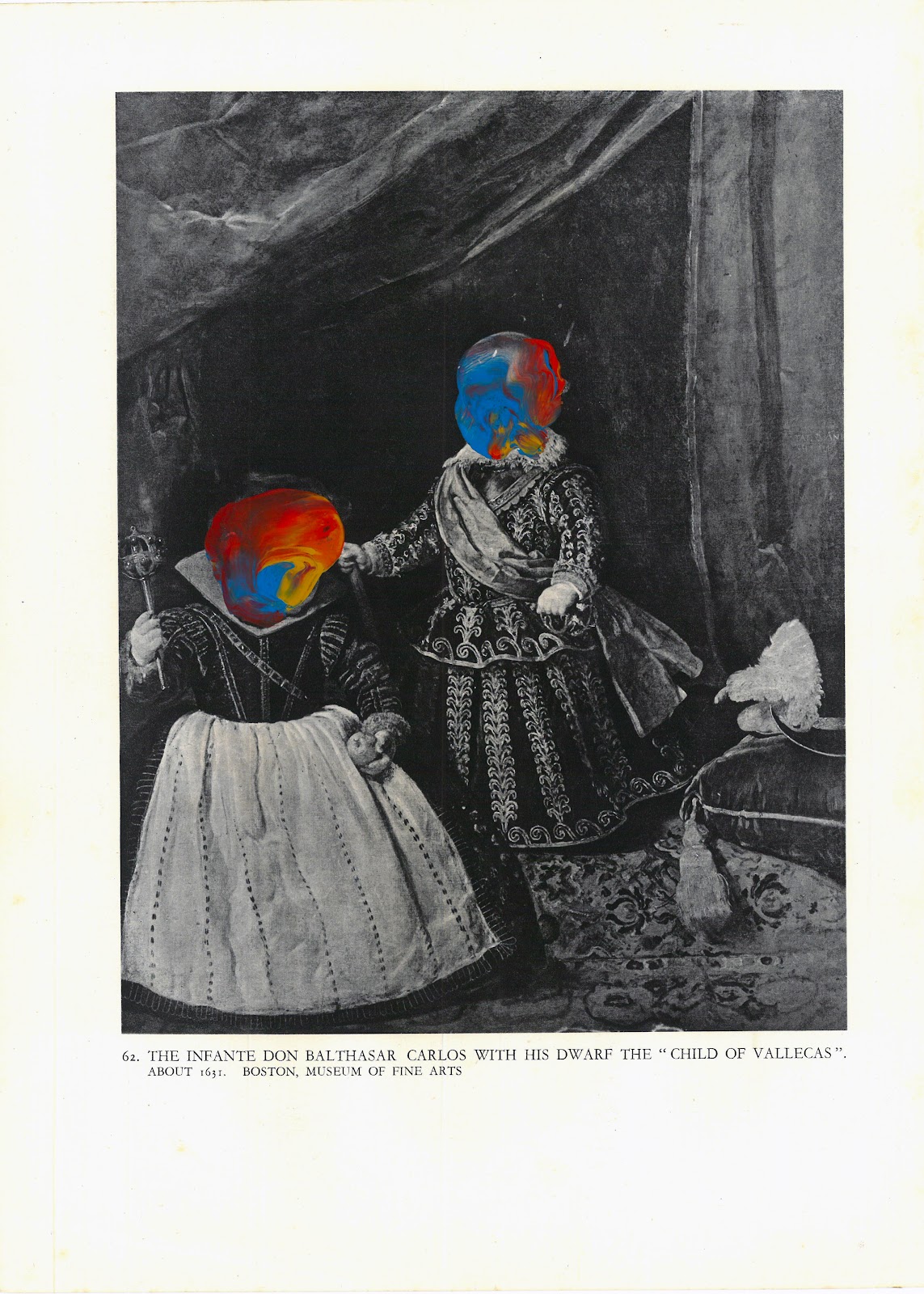"The Wedding Feast" (acrylic, 80 x 60cm) is an unpublished "collaborative modification painting" of CAPA components James Burns and Carlos Re, signed and dated in 1997, over a large format reproduction of namesake title (c. 1567) painted by the dutch master, linked to the sixteenth-century painting, Pieter Brueghel the Elder. About the original painting of Brueghel, displayed here we know that this masterpiece was part of his "peasant life" paintings done between (1567/1568). This paintings illustrated the peasant life from northern europe, being the most outstanding examples of Brueghel's late style, which is characterized by his use of monumental Italianate figures. In fact, it was paintings of this type which caused Brueghel to be known as the Peasant Brueghel. In addition, we know that he was a leading member of a highly circle in Antwerp. With our increasing knowledge of the symbolism contained in much sixteenth-century northern painting, it seems likely that, in addition to the obvious celebration of peasant life, the pictures have a strong moral dimension too.
 |
| "The Wedding Feast" is a "collaborative modification" from CAPA components: James Burns & Carlos Re, signed and dated in 1997. |
James Burns, talk us about the importance of the collaborative process between the components but also, with the same Pieter Brueghel, through time, resulting a collaborative work redefined 430 years later giving it a new perspective. Renaissance painting is well know for being an illusionist transmitter and difusser of life of that era, an aesthetic idea which was soon coupled with the idea of "the Albertian window", the creation of an illusion that for experimental artists of the Knistoff branch, remains open to the reinvention and critical recontextualization.
 |
| "The Wedding Feast" by Pieter Brueghel the Elder, c. 1567 (Oil on wood, 114 x 164 cm) |
About Carlos Re (Argentina), we know that was member of the CAPA collective between 1993-1997, as well as the dutch artist Martin van Zomeren who participated very actively alongside Freddy and James during that period. Anyway, the story of Carlos is very mysterious because, since a trip to Spain in 2000, Freddy or James, never heard again from him. Neither in the circles of the Spanish Surrealism, Experimental Art, nor International Surrealism. His story reminds me a lot the Dada story of Arthur Cravan, missing in action and at the same time reinvented in any other kind of being. Luckily, we still have James and Freddy to remind us about this CAPA members and the way they contributed to the CAPA cultural heritage.
About James Burns, we can happily announce that he continues working actively in the CAPA Movement since he was invited by Freddy in 1994, and now become one of the strongest pillars of the Movement. Particularly, in this "collaborative modification" work, is pretty easy to identify the hand of James, in that white-bolds brushstrokes, very characteristic of his minimal style wide know between the CAPA components. The interest of J. Burns beyond CoBrA is the american type, the Action Painting and the Post-Painterly Abstraction Movements; being one of its most influential artist the minimal artist Robert Motherwell. Another link to CAPA History on hands of this Post-Minimal Automatic artist.
 |
| James Burns at his Studio in Seattle (June 14, 2019) |




